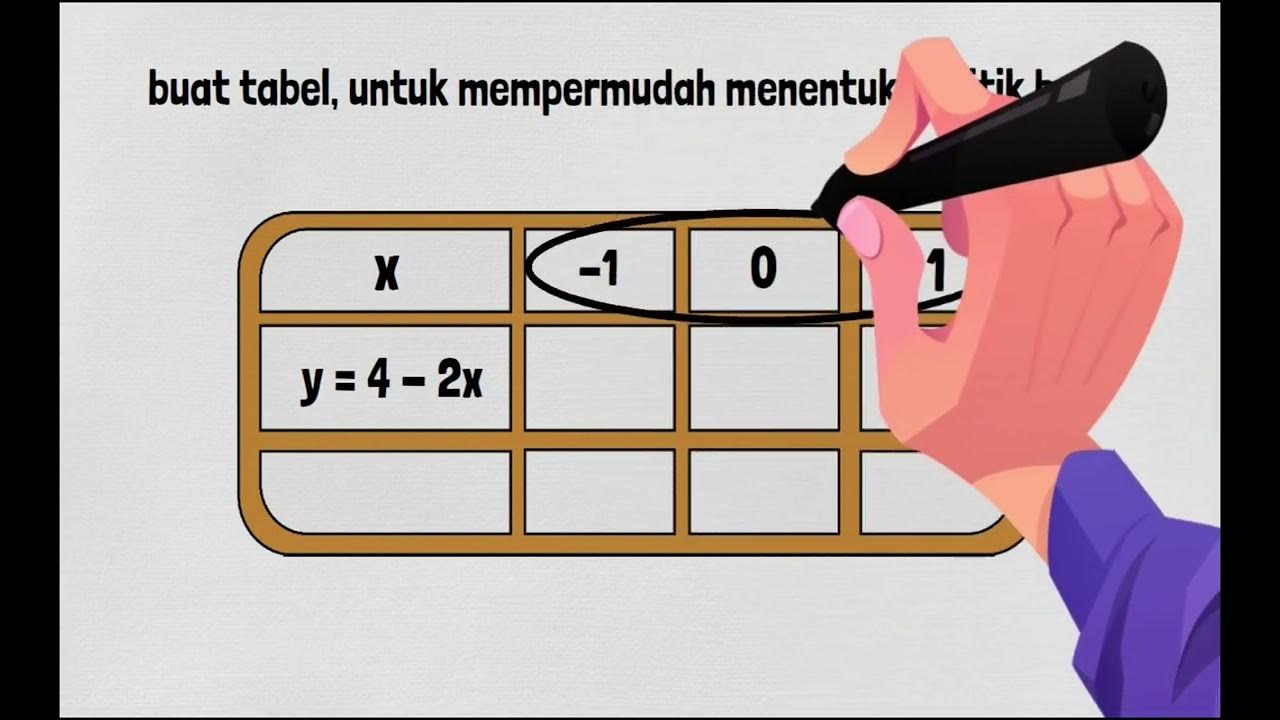EQUAÇÃO DO 1º GRAU #01
Summary
TLDRIn this educational video, Gis introduces the concept of first-degree equations using a relatable scale analogy. She explains how equations represent a balance between two expressions and demonstrates step-by-step how to solve equations by isolating the unknown variable. Through interactive examples, Gis illustrates the process of solving equations such as '3X + 1 = X + 7' and '3X + 8 = X + 12.' The video emphasizes the importance of balance in equations, providing viewers with a clear understanding of algebraic thinking and the step-by-step approach to solving equations.
Takeaways
- 😀 Equations are essential in mathematics and help solve real-life problems.
- 😀 The concept of balance is crucial in understanding equations, which is illustrated through the use of a scale.
- 😀 A scale in balance represents an equation where both sides are equal.
- 😀 In the given example, the blue square represents an unknown value, which is symbolized by the letter 'X' in the equation.
- 😀 An equation always has an equal sign ('=') between two expressions.
- 😀 The unknown value in an equation is called the 'unknown,' not a 'variable,' because it can only have one value.
- 😀 Solving an equation involves finding the value of the unknown that makes both sides of the equation equal.
- 😀 To maintain balance in an equation, any operation done on one side must be done on the other side.
- 😀 The first-degree equation demonstrated is 3X + 1 = X + 7, where 'X' represents the unknown value.
- 😀 To solve the equation, you subtract or simplify both sides step by step until the unknown value (X) is isolated.
- 😀 The solution to the equation can be verified by substituting the value of 'X' back into the original equation to check if both sides balance.
- 😀 The second example further illustrates the process of solving equations using the balance scale analogy, resulting in X = 2.
Q & A
What is the main purpose of learning equations in mathematics?
-Equations are fundamental in mathematics as they are used to solve various problems in everyday life, allowing us to find unknown values and understand relationships between different quantities.
Why is the idea of balance important in studying equations?
-The concept of balance is crucial because an equation represents two expressions that are equal, much like a balanced scale, where both sides are equal in weight or value.
How does the scale help explain the concept of equations?
-The scale illustrates the idea that both sides of an equation must be equal. By adding or removing weights (representing values or variables), the balance of the scale mimics the process of solving an equation to find the unknown.
What does the letter 'X' represent in an equation?
-In an equation, the letter 'X' represents an unknown value, which is the goal of solving the equation. It is not a variable, but an unknown that can only have one value that satisfies the equation.
What is the difference between an algebraic expression and an equation?
-An algebraic expression consists of numbers, letters, and operations, but it does not have an equal sign. An equation, on the other hand, contains two expressions with an equal sign between them, representing balance.
What does solving an equation mean?
-Solving an equation means finding the value of the unknown variable (represented by a letter, such as 'X') that makes both sides of the equation equal.
How do you solve an equation step by step?
-To solve an equation, you isolate the unknown on one side by using inverse operations, such as addition, subtraction, multiplication, and division, while maintaining balance between both sides of the equation.
In the first example, how did we determine the weight of the blue square?
-In the first example, we used the idea of balance and the known mass of the balls to set up an equation. By solving for 'X', we determined that each blue square weighs 3 kg.
What happens if you subtract or add weights on one side of the scale?
-If you subtract or add weights on one side of the scale, the scale becomes unbalanced. To restore balance, you must perform the same operation on both sides.
How can we validate the solution to an equation?
-We can validate the solution by substituting the value of the unknown back into the original equation to see if both sides of the equation are equal. If they are, the solution is correct.
Outlines

This section is available to paid users only. Please upgrade to access this part.
Upgrade NowMindmap

This section is available to paid users only. Please upgrade to access this part.
Upgrade NowKeywords

This section is available to paid users only. Please upgrade to access this part.
Upgrade NowHighlights

This section is available to paid users only. Please upgrade to access this part.
Upgrade NowTranscripts

This section is available to paid users only. Please upgrade to access this part.
Upgrade NowBrowse More Related Video

SISTEMA DE EQUAÇÕES do 1º grau Método da ADIÇÃO | Matemática Básica \Prof. Gis/

EQUAÇÃO do 1ºGRAU com DUAS incógnitas | Matemática Básica | #10

SISTEMA DE EQUAÇÕES do 1º grau | Método da SUBSTITUIÇÃO | Matemática Básica \Prof. Gis/

REGRA DE TRÊS SIMPLES \Prof. Gis/ Matemática

FUNÇÃO DO 1 GRAU | FUNÇÃO AFIM | \Prof. Gis/- AULA 1

Grafik Garis Lurus
5.0 / 5 (0 votes)